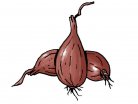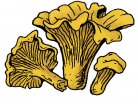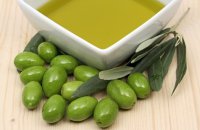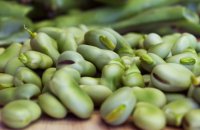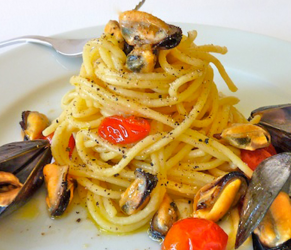The history of saffron
Saffron was one of the most desired and expensive spices of antiquity, revered for its aroma, color, and aphrodisiac properties by the ancient Greeks, Egyptians and Romans. From the writings of Homer, Aeschylus, Pindaros, and others, we know that “crocus,” or saffron, was considered by the ancients to be a rare therapeutical and pharmaceutical with unique properties.
Etymologically, the word crocus has its origins in the Greek world "croci," a term that refers to the weft thread used for weaving on a loom. Mythologically, the plant took its name from the youth named Crocus, who, after witnessing the death of the fair Smilax, was transformed into the crocus flower by his despair.
It was used widely to alleviate the pains of menstruation, to relieve the stomach, and to help with digestion. Believing it to relieve muscle spasms, the people even used it as an antispasmodic drug.
Today, the herb is cultivated in only a few places around the world, among them, Kozani in Greece. In fact, Greek saffron is considered to be of the highest quality, drastically overshadowing the product capabilities of Iran and Spain. For one kilo of saffron, 150.000 to 200.000 flowers are required; from these the stamen must be collected, dried, and sorted according to their quality, and then finally packed.
Packaging is always small (with packages being 1-4 gr), since the spice has extremely intense color and aroma. To flavor four portions with high quality saffron, ¼ of a gram is sufficient!
Saffron and medicine
Within this new day and age, specialists have scientifically concluded that the herb does, in fact, possess such qualities. Hence, it is considered to be both an excellent stomach ailment and an antispasmodic, helping in digestion and increasing the appetite. It is still It is also renown for its anti-thrombotic properties, as it reduces the blood clotting throughout of the circulatory system. It is known to alleviate kidney pains and can be used as a medication against infections of the upper respiratory system. It combats depression, and is widely considered to be the ideal sedative.
As a therapeutical plant, it is used still today to relieve renal colic and alleviate tension. Recently, it has been used both as a drug for flu-like infections and depression. In small quantities, doctor's still prescribe it to regulate women’s menstruation, relieving premenstrual syndromes and helping in conception.
Moreover, as a result of its essential oils, many use it to energize and reinvigorate the body. Used mainly in Europe and the United States, the herb is commonly employed as a cooking spice. It is used in pastry making and in the production of beverages. Similarly, both the dairy and pasta industry use it as an aromatic coloring substance. Drastically transform your food with the simple addition of saffron!
Saffron in dyeing
The basic ingredient of saffron is crocin, a substance that was rare and expensive in antiquity as a result of its dyeing properties. This substance produces a deep purple color so exquisite that it came to signify the high status of royalty. The Romans used it to dye their hair with purplish tinges, while the Irish carried the “purple carpet” of saffron to distinguish those of royal blood.
Yet, when used in mural paintings, it creates a orange-yellow color, as in the famous frescos of Santorini. In fact, the term saffron supposedly derives from the Arabic word for yellow.
Saffron in cooking
Saffron is used as a spice both for coloring and flavoring, thereby providing the food subjected to it with a distinct aroma and a beautiful golden color all at the same time. Saffron is added to myriad food products, including cheese products such as U.H.T. cream, cottage cheese, parmesan cheese, soups, chicken and meat. It supplements a variety of spirits, pastas, and types of rice. To use saffron, infuse a few flakes in a cup of lukewarm water, for a short time, so that it releases its color, aroma and natural flavor. Take care not use hot water or oil because these will act as insulators and will not allow the saffron to release it color and flavor. You will add the saffron-infused water towards the end of the recipe.
Or more simply, you could further crumble the flakes, adding them directly to the pot. Unlike other spices, a mere pinch will suffice to add substantial flavor and color.
To best highlight the qualities of saffron, use a neutral base, like rice, potatoes, pasta, white meat, or fish. In Greece it is used in the distilling process of tsipouro (a strong spirit), in biscuits, sauces, and fish soups. In Spain, it is added to paellas, while in Italy, it is used to make risotto Milanese, which is rice with saffron. In France, saffron is the secret ingredient within the world-famous bouillabaisse, or fish soup!
Suggested GOURMED's recipes involving this glorious herb:
Octopus with Honey and Saffron
Lobster with saffron sauce
Cinnamon ice-cream with noodles served with chocolate mouse and salep
Tsipouro with saffron and lemon
Ravani Cake with Saffron Ice Cream
The Many Faces of Saffron
For millenia, saffron has played a predominant role in medicine, manufacting, and cooking. Today, however, its cooking uses drastically outshadow its dyeing and medicinal purposes.
Country:
Category:
Related Articles
Most Popular recipes













































